31 Ulcers and erosions: Local causes, drug-induced ulcers
Figure 31.1 Causes of ulcers.
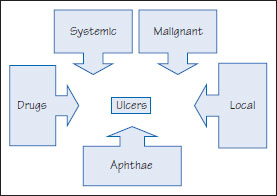
Figure 31.2 Ulceration after biting the lip in a convulsion.
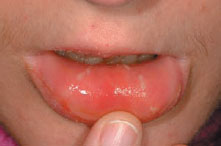
Figure 31.3 Traumatic ulcer.
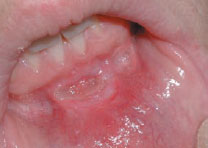
Figure 31.4 Chronic traumatic ulcer.
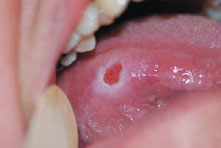
Figure 31.5 Nicorandil-induced ulcer.

Figure 31.6 Methotrexate-induced ulceration.
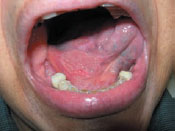
Various infections or other systemic disorders, particularly those of blood, gastrointestinal tract or skin can produce mouth ulcers. Malignant neoplasms usually begin as swellings or lumps but may present as an ulcer. Mouth ulcers are often caused by trauma or burns, or aphthae, sometimes by drugs.
A useful mnemonic is So Many Laws And Directives (Figure 31.1) (Table 31.1).
Features that may aid diagnosis are ulcer numbers, shape, size, site, base, associated erythema, margin, and pain. A single ulcer, especially if persisting for three or more weeks is usually indicative of a chronic problem such as malignant disease or serious infection (e.g. tuberculosis or a fungal infection).
Local causes
Oral ulceration due to local factors is common. The history is typically of a single ulcer of short duration (5–10 days) with an obvious cause. Trauma may cause ulceration – typically of the lateral tongue, or the lip or buccal mucosa at the occlusal plane (Figure 31.2/>
Stay updated, free dental videos. Join our Telegram channel

VIDEdental - Online dental courses


